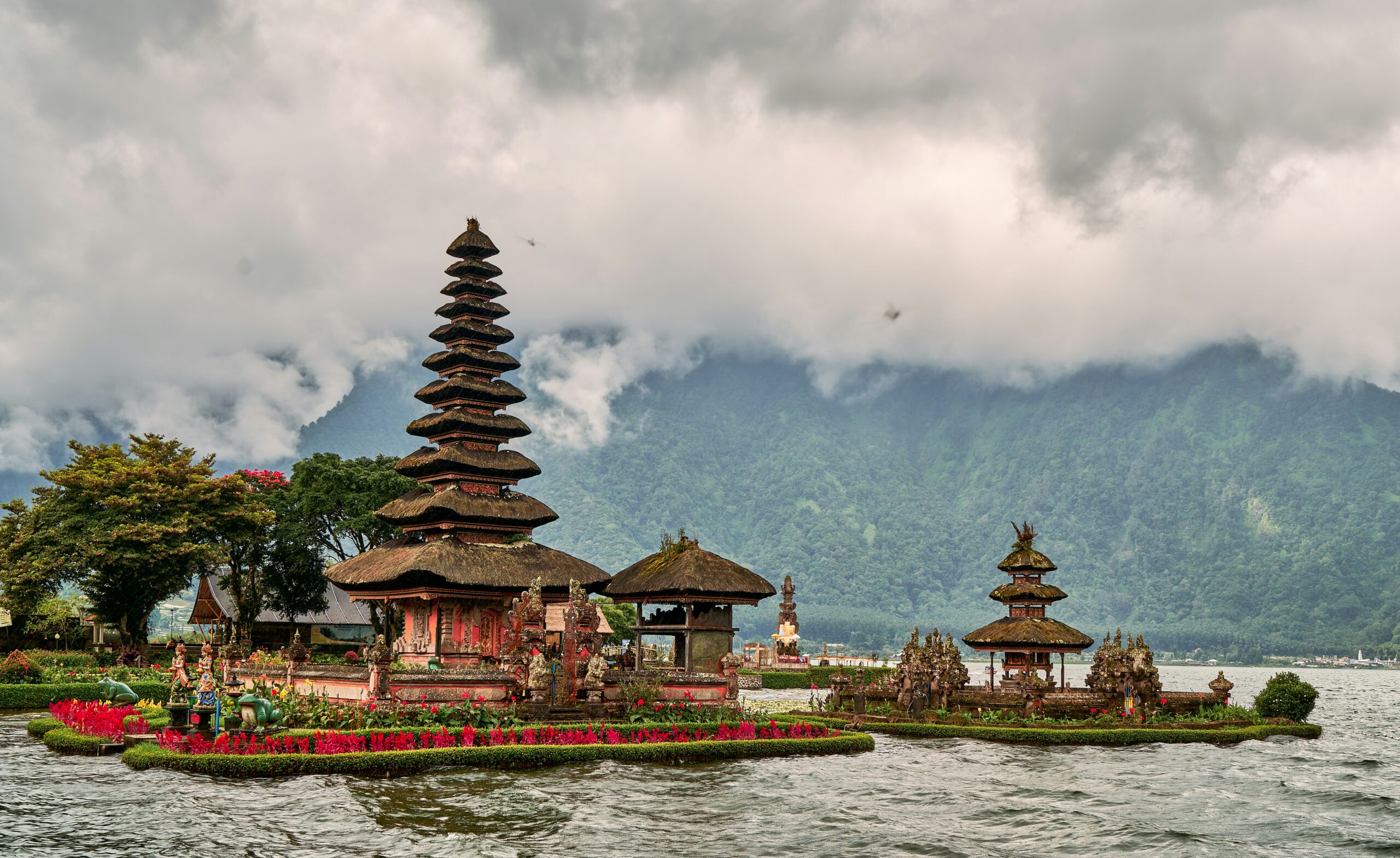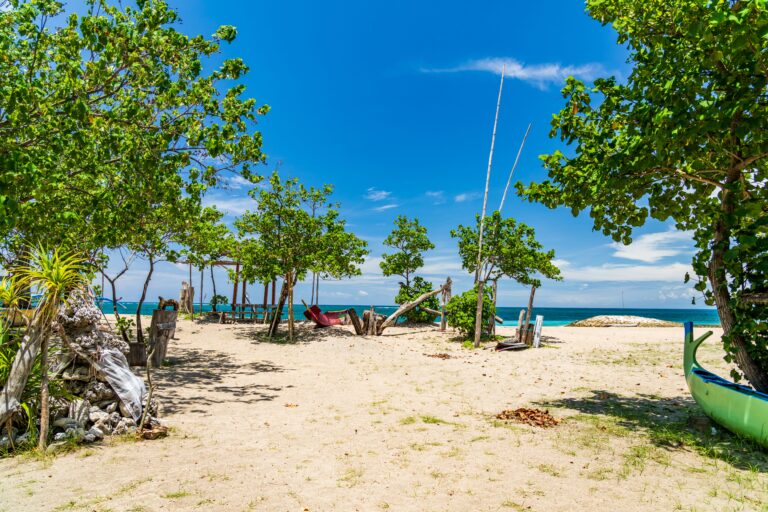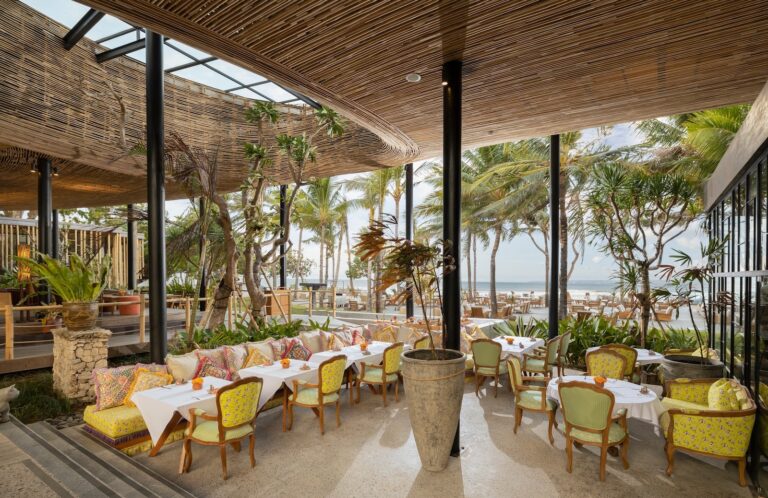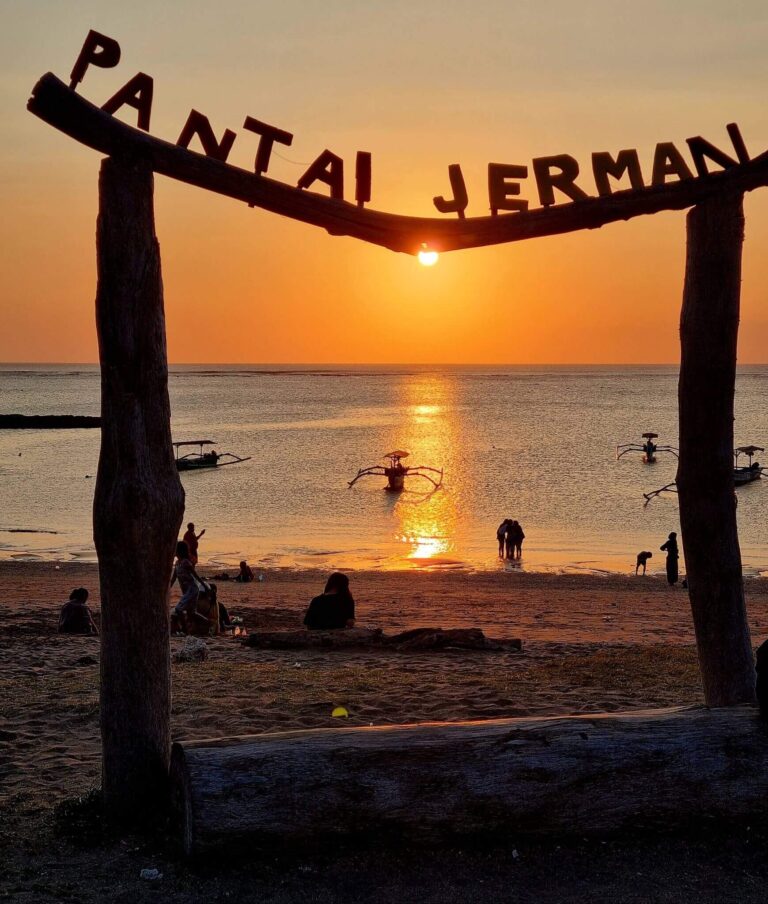To better understand Balinese identity, the island’s religious and cultural traditions, as well as Balinese people, one should dive into the complex, millennia-old history of Bali island and its people.
What were the first people, and religions, and how did Bali live before it became a tourist destination? These answers and more are in our brief history timeline.
We tried to make it more interesting than just a dry narrative of facts you’ll find in a history book.
Quick Bali History Timeline
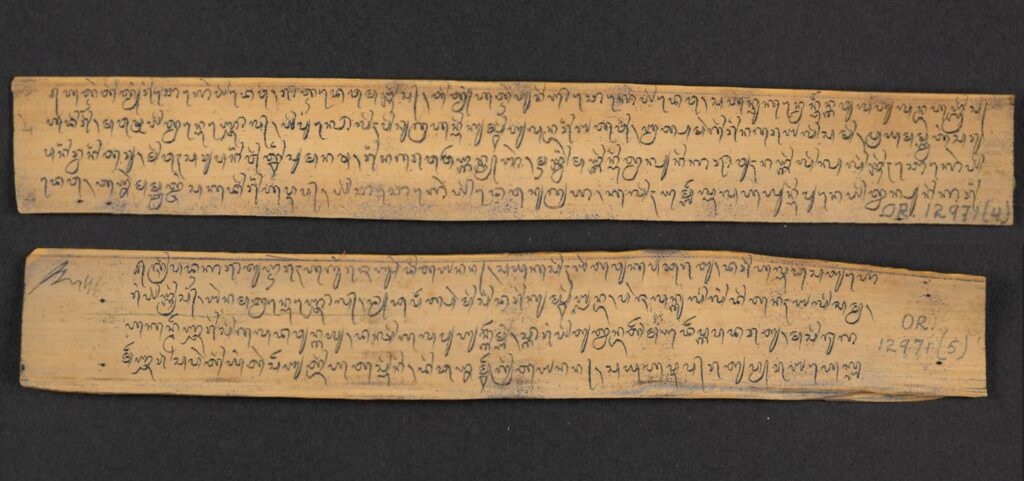
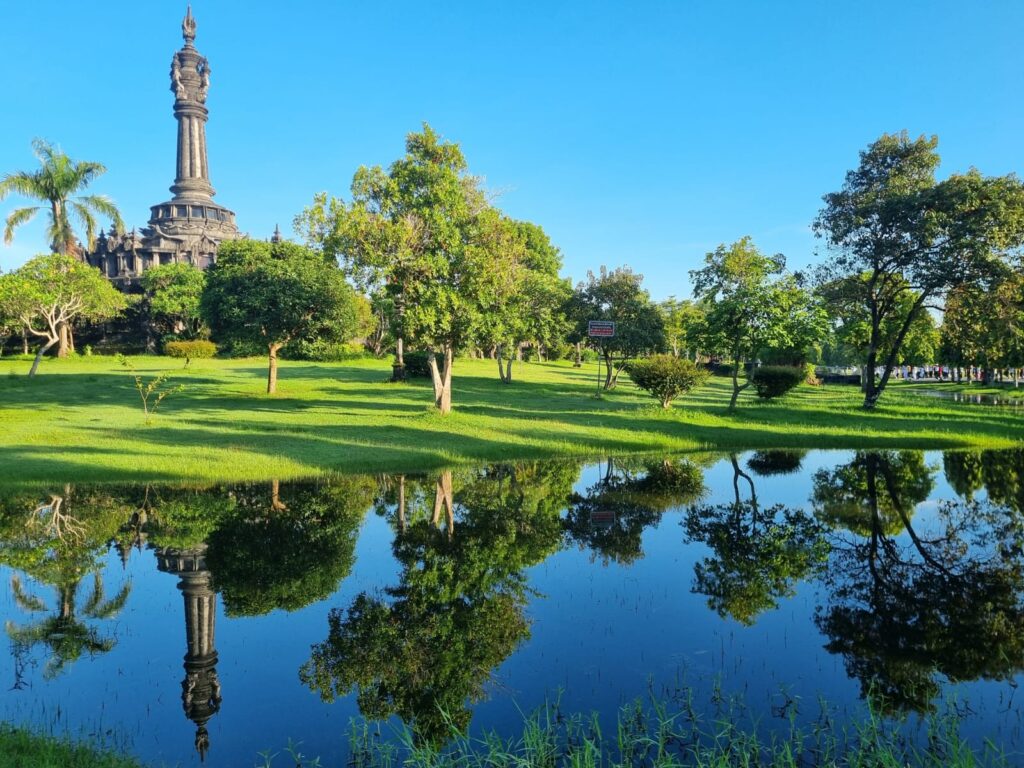
As this part of the world is highly prone to volcanic eruptions, it is only logical to suppose that Bali was formed during one of the big movements of tectonic plates.
Experts say it probably happened somewhere around 15 million years ago and the Eastern part of the island would have formed first. Later on, the southern part was partly formed from solidified coral reefs.
Prehistoric Times & Ancient Bali
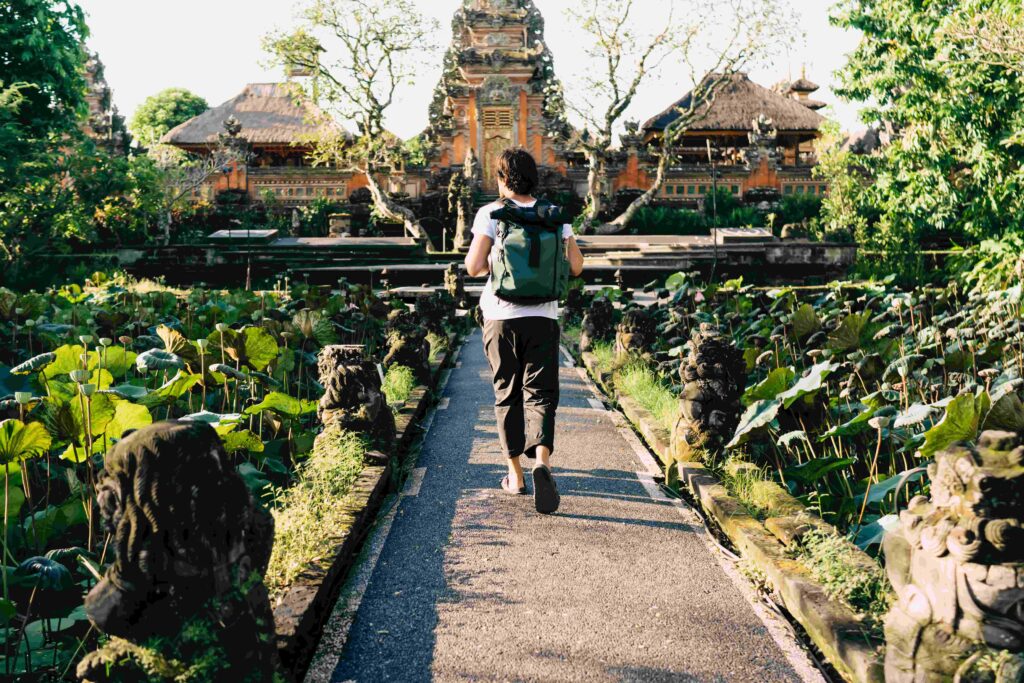
People on Bali island have been around for thousands of years, as far as the Stone and Ice Ages.
Archaeologists found in Cekik village in West Bali stone tools dating back thousands of years, and bronze items from the Neolithic and Bronze Ages.
The first people developing and living on the island were Java Men followed by Australoids (Homo Sapiens), and, finally, Austronesians, who probably migrated here from South China around 3000 to 600 BCE.
We can be certain that people on the island had advanced engineering skills since around the 8-9th centuries and cultivated rice using the subak water irrigation system you can still see today and is a part of UNESCO world heritage.
They were also using a written language as evidence by styli from this period of history and the following centuries.
Bear in mind, at those times Asian fauna was at its peak with dwarf elephants, monkeys and even tigers populating Bali.
Metal tools were largely influenced by Vietnamese culture – Dong Son, with all raw materials imported to Bali.
Early Indian & Chinese Trade (1st-9th Centuries)
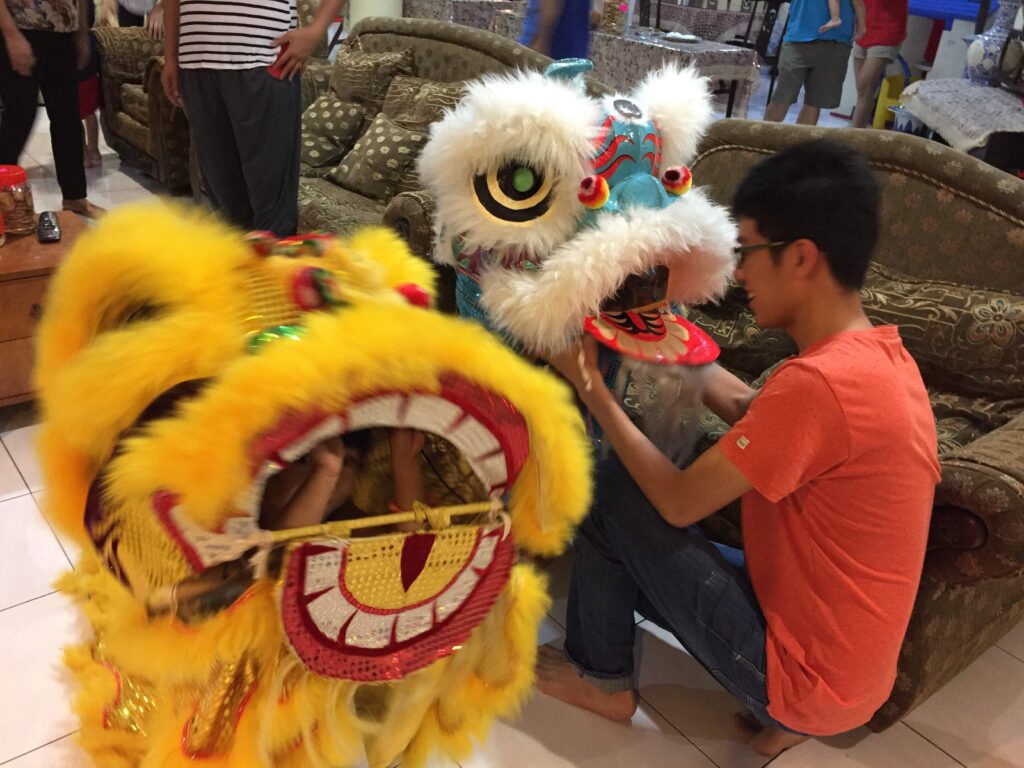
While the first Indian merchants traded with Java and Sumatra most of the time, the influence of Indian Hinduism, culture, and food, sipped till Bali around 900. Chinese ships often visited Bali too bringing Daoism/Buddhism with them.
That’s how, we believe, elements of Sanskrit, Chinese coins, and the government system were adopted into the Balinese language and culture by the 7th century through Indian and Chinese influence.
Indian Hindu society in the 9th century was probably based on nine Hindu sects Pasupata, Bhairawa, Siwa Shidanta, Vaishnava, Bodha, Brahma, Resi, Sora, and Ganapatya. This would have begun to spread to Java at this time.
Spread Of Hinduism (11th century)
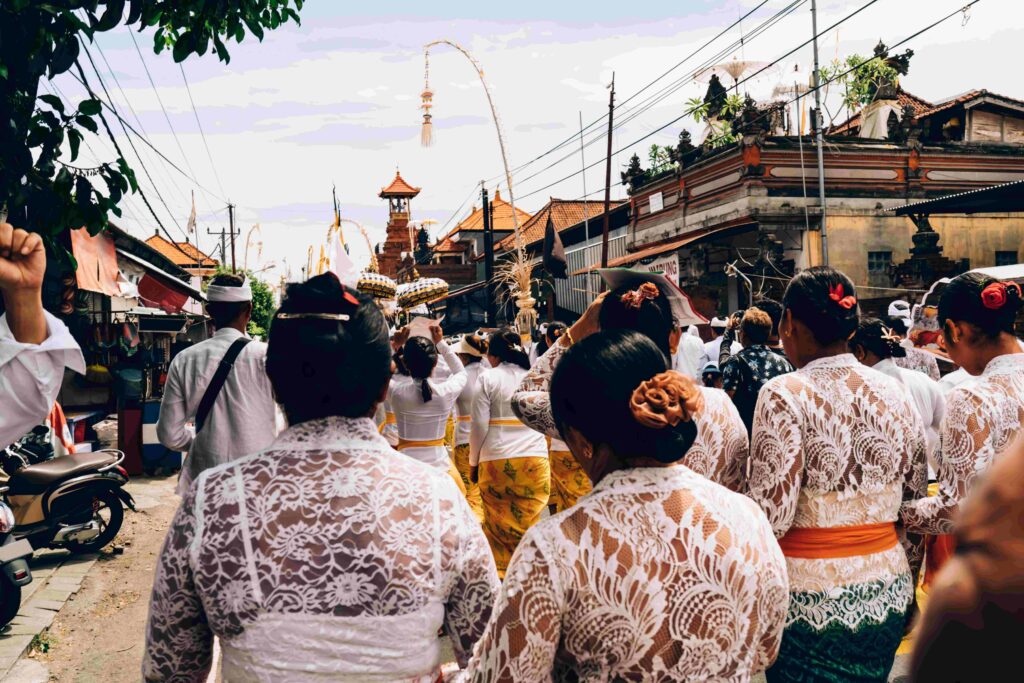
Before Hinduism, Balinese culture worshipped ancestors, nature, and spirits. That is, they practiced animism.
Hinduism was brought to Bali from Java (where it came from India) around the 11th century by one of the most prominent Javanese kings – King Airlangga, more precisely because of his mother, who married Balinese king Udayana.
However, Bali at this time was still semi-independent, with its people having thier own beliefs and way of living.
Indian Hinduism was accepted and molded to become Balinese Hinduism, as people and Hindu priests in Bali incorporated many original rituals and symbolism into their practice.
Java-Bali Relationships Turmoil During Majapahit Empire (13th-15th Centuries)
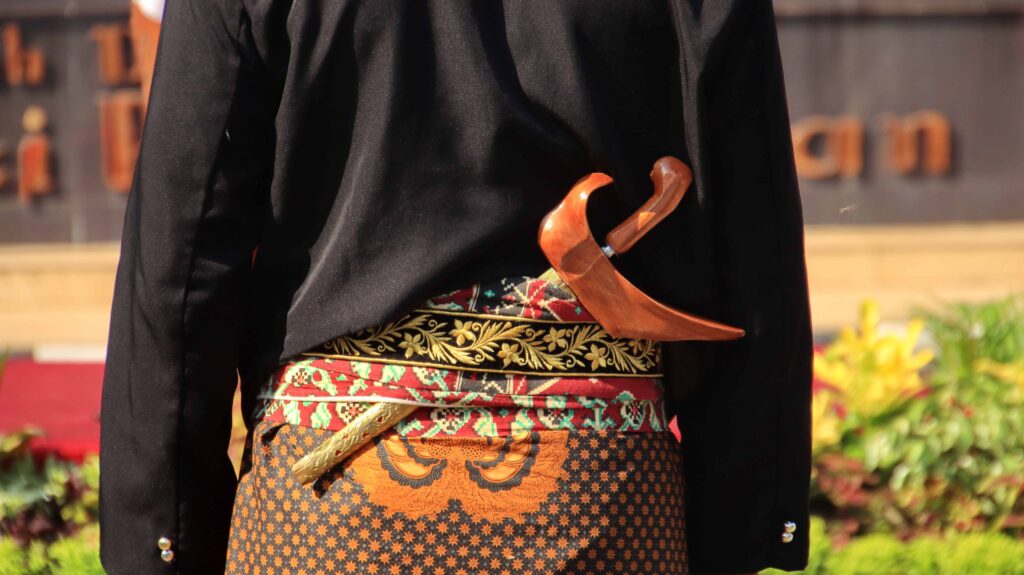
The next Javanese king – Kertanagara had different plans for Bali and instead of cultural exchange, he conquered the island in the 13th century (1248). For the next 8 years, till 1256, Bali was under Javanese influence.
Shortly after that, Bali fell again and became a Balinese colony of the Majapahit Empire (Eastern Java) around 1343 by Gajah Mada.
Around that time, first Ubud and then Gelgel (modern Klungkung) became the center of the Balinese kingdoms, as Bali was still facing down Javanese conquests.
But, Bali had its own culture, its own Balinese language, and its own Balinese leaders, so even if now we know Bali island as part of the Indonesian archipelago, it wasn’t always sharing the same culture.
Bali’s Golden Age (16th Century)

Gelgel was the base of the King of Bali for nearly 200 years and when Bali finally saw the Majapahit Empire fall. It was Gelgel that allowed Balinese influence to spread to Lombok island.
During the collapse of the Majapahit Empire in the 15 century and the spread of Islam, many intellectuals, artists, and Hindu priests moved to Bali, one of them is crucial for Balinese culture – Nirartha, who shaped it in many ways how we see Balinese life today and built famous Uluwatu temple and Tanah Lot Temple.
Bali island of the 15th century was becoming a royal and cultural destination, but also the last reservation of what was left of Majahapit glory.
It is important to understand that Bali was not yet a part of Indonesia as we know it today. In fact, Bali wasn’t even a single island, it was a series of states that were comprised of 9 wealthy kingdoms.
First European Contact (16th Century)
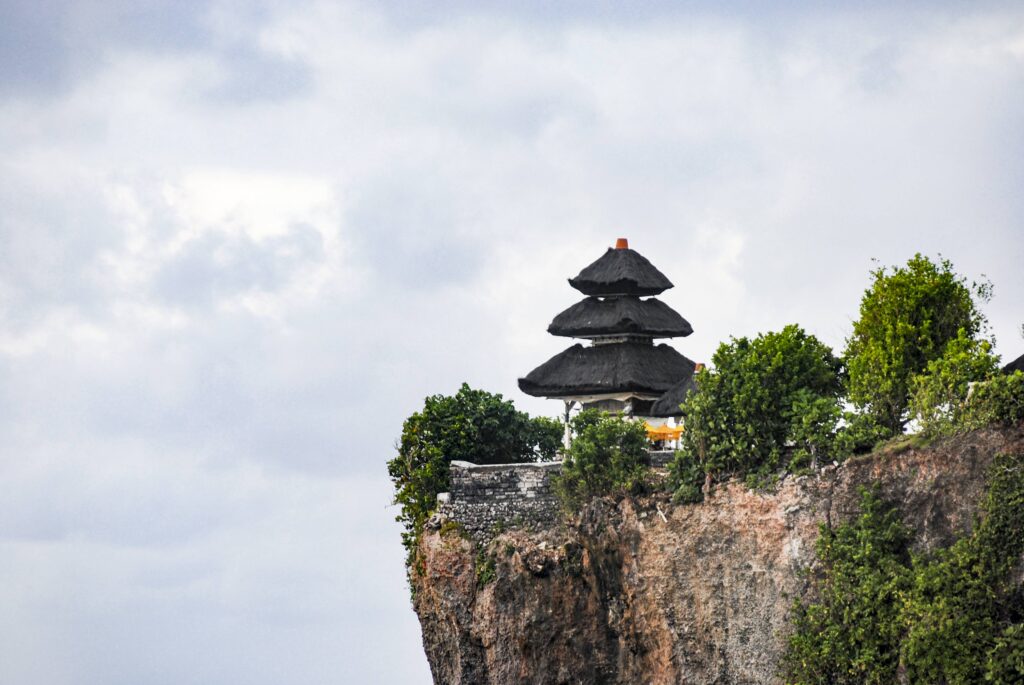
It was bound to happen, and one day in 1585, a Portuguese expedition reached the Bukit peninsula. A few years later, in 1597 the first Dutch explorer ships docked in Bali.
Of course, Europeans were absolutely mesmerised by tropical paradise and its peculiar people. Imagine, meeting a king of a remote island who has hundreds of wives and antiquities you’ve never seen in your life!
This first encounter was genuine, but the next visitors were in love with the island of Gods just as much as they were interested in oils, spices, art, opium and the slave trade.
Blissful admiration had another 6 years to flourish until it all ended as what we know as Dutch Colonial Rule.
Dutch Colonial Rule (17th-20th cc)
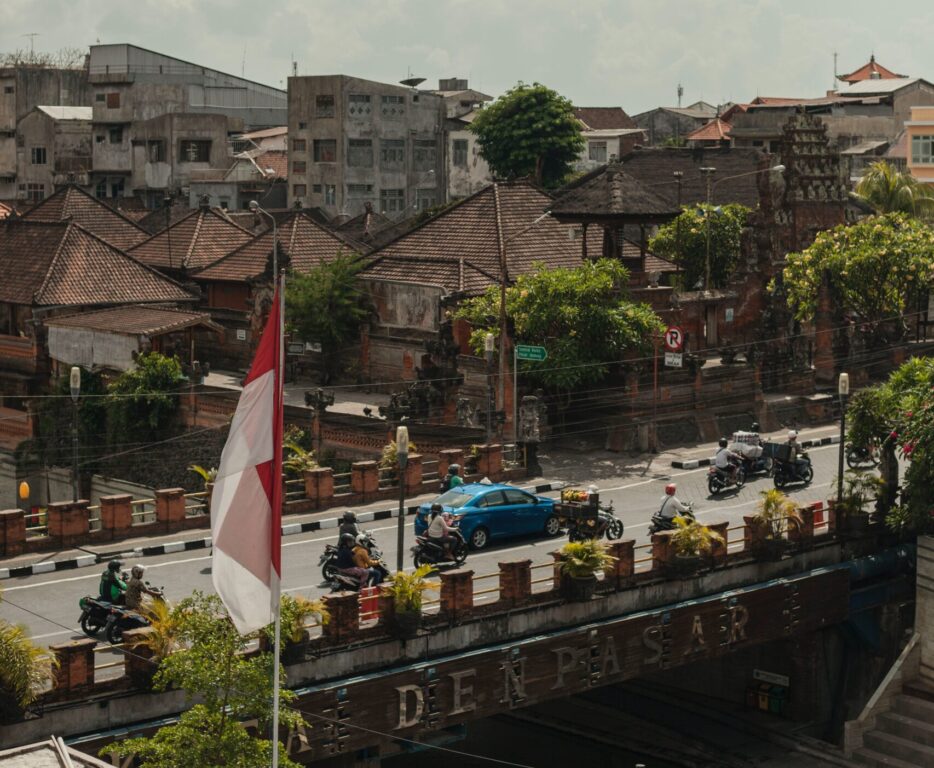
At first, the Dutch East Indies came around 1600 to simply trade which seemed like a genius idea for the Balinese economy. A few Portuguese and Dutch crew members joined the royal family circles. All was going well.
Dutch East India Company already ruled over Muslim Java since 1743 and now they had to get the whole of Bali too.
The complete Dutch control of the island didn’t happen overnight though. The Dutch forces had to move in slowly, taking over small kingdoms one by one, and it took years. The first to fall was the island’s north coast – around the 1840s.
We have to say that the internal conflicts between kingdoms in the island’s south and central Bali made it easier for the Dutch to advance.
With most of the South and North of Bali conquered by the end of the 19th century, the Gelgel (Klungkung) kingdom was the last standing base against the Dutch which fell after performing mass suicide known as Puputan as a result of a Dutch assault in 1906 and 1908.
Only then, the whole of Bali was under Dutch political rule. Kuta town as we know it today, was largely shaped by Dutch trade and Western tourism already in the end 19th-beginning of the 20th century.
In total, Dutch intervention and pre-war colonial administration lasted from 1602 to 1942.
Japanese Occupation of Bali In World War II (1942-1945)

An unfortunate event made Japan put Bali on the map during their Netherlands East Indies campaign. Japan had airfields in Borneo they were planning to use, but tropical rains made it impossible, so Japanese forces had to improvise.
In 1942, only some Dutch KNIL officers guarded important ports of Bali. Japanese forces landed in Sanur and quickly took over.
They decided to occupy Bali from 1942 till the very end of the war in 1945. British forces made the Japanese surrender and give the island back to the Dutch, as Dutch governors hoped to make Bali its colony again.
Dutch constituted Bali as one of the 13 districts of the State of East Indonesia – the new state they proclaimed in opposition to the rest of Indonesia.
But the success didn’t last long, as Indonesians were ready to become free. In fact, this Japanese occupation gave Balinese time to regroup. One Balinese military officer – I Gusti Ngurah Rai, gathered a Balinese freedom army that would play a vital role in the island’s independence.
Denpasar Ngurah Rai airport is named after him, a true hero of a Balinese battalion as they performed ritual suicide on 20 November 1946 at Marga in the face of a superior Dutch force.
Indonesian Independence (1945)
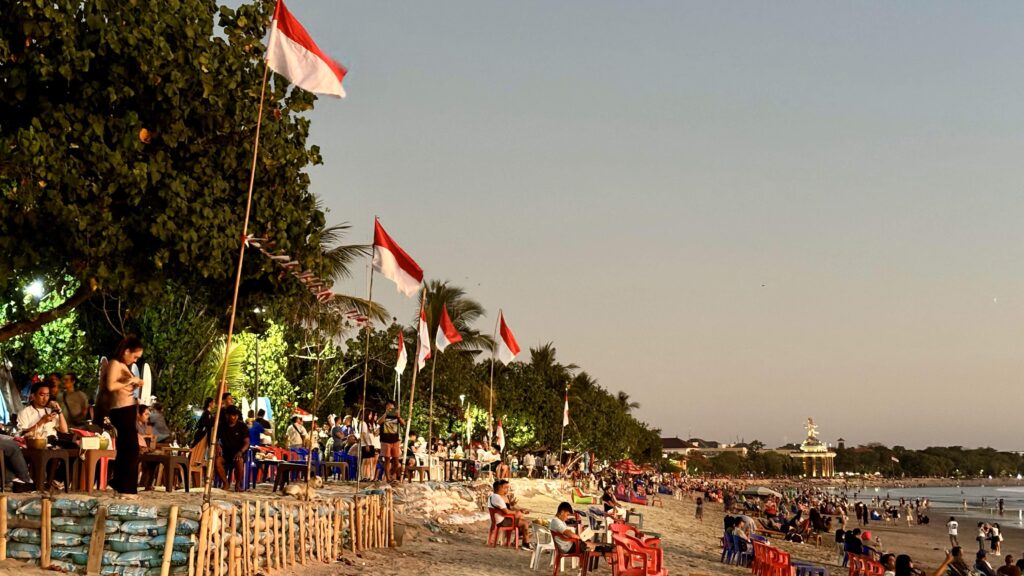
After 340 years of Dutch rule, Balinese military resistance kept fighting against remaining Dutch rule. Indonesia has elected their first president – Soekarno, who immediately proclaimed Indonesian independence on 17 August 1945.
However, the history of Bali is not that easy. Despite the fact that we know the president announced the independence, the conflicts with the Dutch lasted for another 4 years, until the Dutch government finally realized they would not take the colony back.
The Indonesian government officially declared Bali as an Indonesian province only in 1958.
Transmigration (1963-1970s)
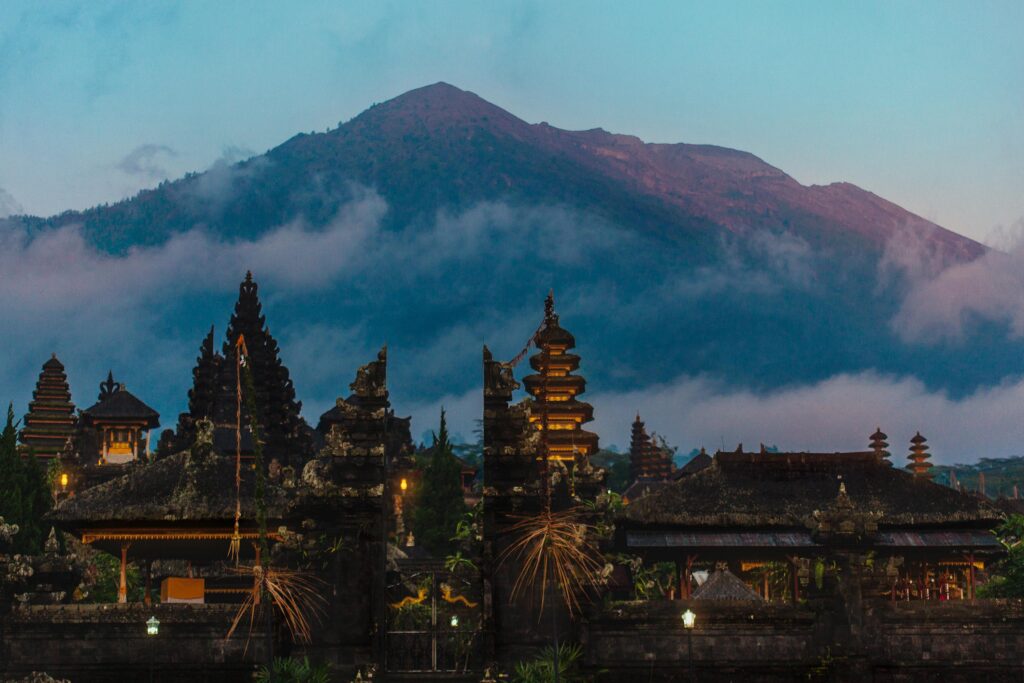
Bali’s volcanic nature and politics shaped its history too.
In 1963 Mount Agung (3,142 m), called by Balinese people “mother mountain”, erupted, killing and destroying a large portion of settlements.
It caused what’s known in the history of Indonesia as transmigration – people left Bali for other islands. Not always this transition was smooth or welcomed by tribes on those other islands. Oftentimes it led to conflicts and death.
A few years later, another tragedy touched Bali island and battles over communism were harsh and severe across Indonesia even in Bali.
Modern Bali: Tourism Mecca (since 1970)
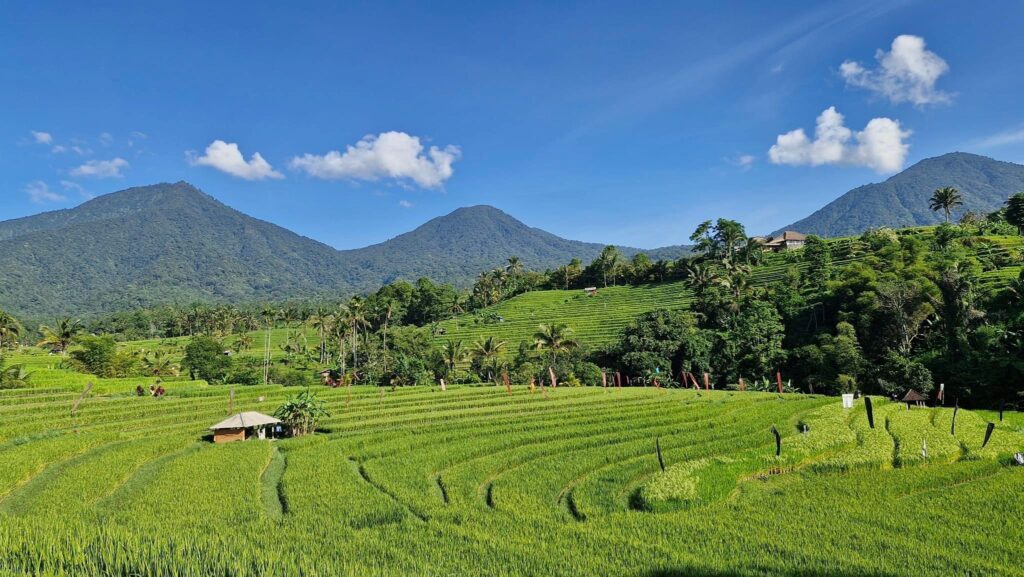
Bali began becoming the tourist destination of all Southeast Asia in 1969 when the international airport was finally completed.
The tropical climate, rich and unique culture, Bali’s central mountains, and endless rice fields, as well as the warm smiles of resilient Balinese people, drew a lot of attention.
First to come were the surfers who headed to Uluwatu for its incredible surf breaks. Then came those who loved to party once Kuta, Legian and Seminyak became known for their party scene in the mid-60s.
To be fair, European elites used to visit Bali a lot even during colonial times. For example, Charlie Chaplin visited Bali in the early 1930s, and some photographers brought priceless shots back to Europe which sparked genuine interest among Westerners.
After the tragic bombings in 2002 and 2005, tourism took a hit and could only recover by 2009.
Bali: 2010s Till Present Times
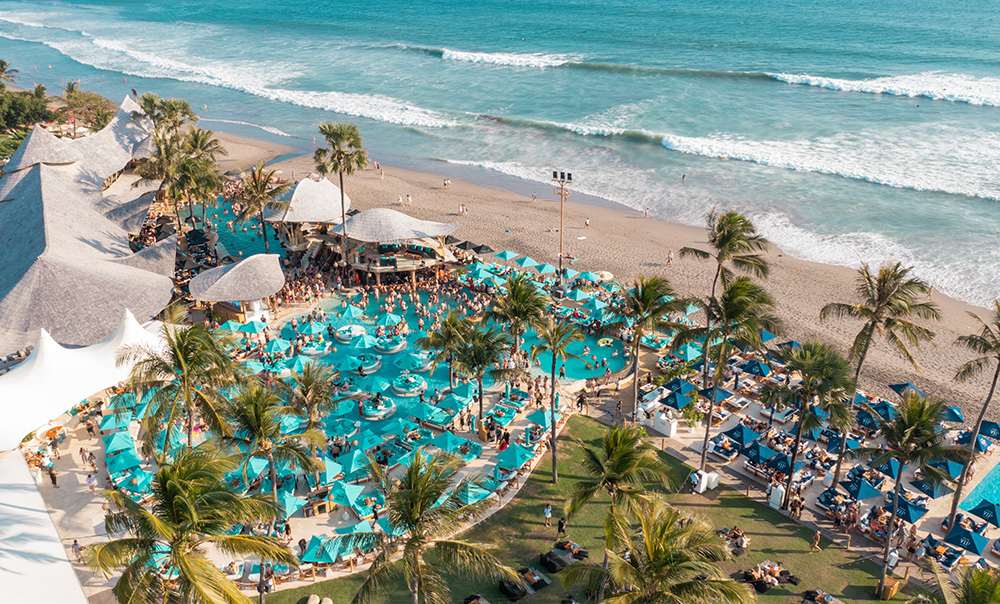
In 2010, the world saw Eat Pray Love, the movie based on the book about Bali, and Bali tourism was booming as it had never before.
The development reached further West, and in 2016 what we all know as Canggu today, started to emerge. More and more surfers venture away from Uluwatu.
Bali was always an easy vacation destination for Australians, but after 2020 more and more Russian, European, American, Indian, and Chinese tourists visit Bali to enjoy food, beaches, coral reefs, and volcanic views.
Domestic and Western tourism and real estate investments led to the rise in demand for beach resort accommodations, nightlife, day trips, and infrastructure.
Yet, till today, south and central Bali produce most of Bali’s large rice crop, waters surrounding the island are abundant in tropical fish, rainforests are dense and magical, and the authentic Balinese culture is well preserved.
FAQs
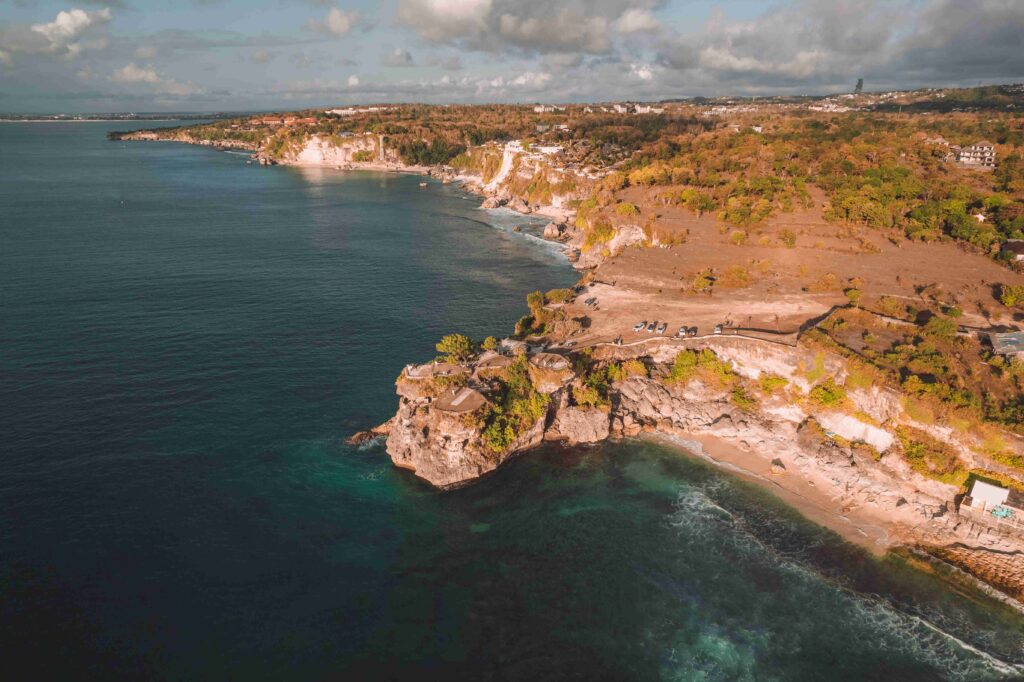
What Is Bali’s Short History?
In short, Bali is a prehistoric island known since Ice Age and developed under Hindu and Buddhist influence up until the 16th century, it was colonised by Dutch rule for 300 years and became independent after World War II.
Why Is Bali Called Bali?
Bali means sacrifice, offering and reincarnation and the name was given to the island around the 10th century by the first Balinese king Sri Kesari Warmadewa.
What Are 5 Facts About Bali?
87% of Bali’s population are Balinese Hindus. Hindu culture still has a caste system.
Balinese people still speak the Balinese language, which is very different from Indonesian. For ex., the Balinese motto is Bali Dwipa Jaya – Glorious Bali Island.
Bali is actually not 1 but 4 islands: Bali, Nusa Lembongan, Nusa Ceningan, and Nusa Penida.
Bali’s New Year is called Silent Day (Nyepi) and is celebrated in March.
Was Bali Occupied During WWII?
Yes, from 1942 to 1945 Bali was occupied by Japan. British army forced Japan’s Pacific surrender in 1945.
Who Owns Bali Island?
Bali is one of the islands in the Indonesian archipelago and it belongs to Indonesia.
Final Thoughts On History Of Bali
As you can see this enchanted land went through a great deal of turmoil and sacrifice to truly earn its name.
Despite all the tragedies and influences, Balinese culture and people maintained their authenticity and continue to thrive sharing their rich heritage with international tourists.

